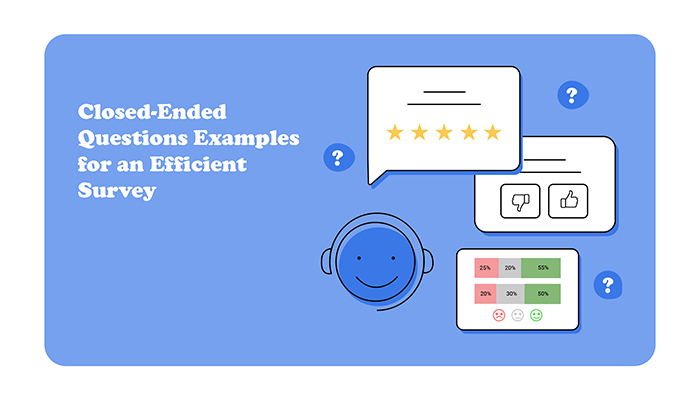
Embark on a journey of structured inquiry with the illuminating guide to “Closed-Ended Questions Examples”.




In the landscape of survey creation and data collection, closed-ended questionnaires serve as confident architects, providing a clear and efficient path to gathering specific responses.
Think of closed-ended questions as the sprinters of the survey world – quick, snappy, and laser-focused. Like a well-orchestrated symphony, they cut through the noise, sparing respondents the agony of lengthy musings.
You’ve come to the right place if you’re tired of long-winded responses and yearn for efficiency.
Here, we’ll explore various closed-ended question examples suitable for your surveys. These examples encompass a variety of domains, including customer satisfaction, market research, employee feedback, and more.
Ultimately, you will create well-structured and efficient surveys that yield valuable insights.
This article is your gateway to understanding the power of closed-ended questions through diverse examples, where each query is designed with purpose and precision.
Definition: Closed-ended questions are a type of survey question or interview questions that offer predefined answer options. They limit respondents to choose from specific responses, such as “yes” or “no,” multiple-choice options, or rating scales. These questions are designed to elicit quick and concise answers, making data analysis more straightforward and efficient.
Closed-ended questions are well-suited for various situations and research scenarios due to their structured and objective nature. Here are some of the scenarios on when to use closed-ended questions:
In survey research, closed-ended questionnaires, presenting predefined response choices, are commonly utilized. They are structured and efficient for gathering specific information. Below are different classifications of closed-ended questionnaire types:
Survey takers opt from a prearranged list of choices.
Example: “Which of the following social media platforms do you use?
Rate your level of alignment or dissent with the presented statement.
Example: Kindly indicate your degree of agreement or disagreement regarding the quality of service received.
Respondents rate something on a scale between two polar adjectives.
Example: “Please rate the quality of the product:
Excellent [ ] [ ] [ ] [ ] [ ] Poor”
Queries typically offer binary choices, often between ‘affirmative’ and ‘negative’.
Example: “Have you purchased our product in the last six months?
Respondents rank options in order of preference.
Example: “Please rank the following factors in order of importance when choosing a smartphone:
Respondents select multiple options from a list.
Example: “Please select all the items you purchased in the last month:
Respondents provide a numerical response.
Example: “Please indicate your daily social media usage by selecting the appropriate time frame:”
Why closed-ended questions?
Unlock the power of precision as you capture laser-focused responses with these closed-ended question examples.
Let’s say you want to conduct a customer satisfaction survey for a footwear brand. You want your survey to include the closed-ended survey questions below.
Below are the response options associated with each question:
Follow the steps below to create a survey using Google Forms.
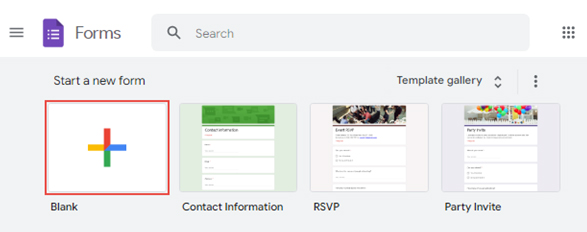

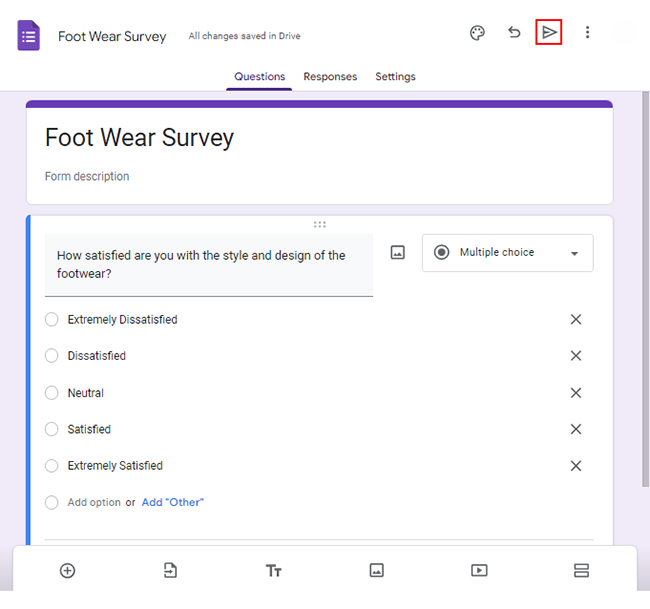


Excel is undoubtedly a popular choice for data analysis, offering many features and functionalities. However, when it comes to visualizing large datasets, Excel has its limitations.
With overwhelming data, creating data visualizations conveying the key insights becomes increasingly challenging.
That’s where ChartExpo comes in.
ChartExpo seamlessly integrates with Excel, providing a user-friendly interface and a wide array of visualization options. With ChartExpo, you can transform raw data into stunning visual representations, making data presentation and analysis easier.
Let’s learn how to Install ChartExpo in Excel.
ChartExpo charts are available both in Google Sheets and Microsoft Excel. Please use the following CTA’s to install the tool of your choice and create beautiful visualizations in a few clicks in your favorite tool.



Assume your closed-ended survey yields the data table below.
| Timestamp | How satisfied are you with the style and design of the footwear? | How satisfied are you with the fit and size options available for the footwear? | How satisfied are you with the value for money offered by the footwear? |
| 10-13-2023 17:47:33 | Extremely Dissatisfied | Neutral | Dissatisfied |
| 10-13-2023 17:47:33 | Extremely Dissatisfied | Satisfied | Neutral |
| 10-13-2023 17:47:33 | Extremely Dissatisfied | Dissatisfied | Extremely Satisfied |
| 10-13-2023 17:47:33 | Neutral | Extremely Satisfied | Dissatisfied |
| 10-13-2023 17:47:33 | Satisfied | Extremely Dissatisfied | Dissatisfied |
| 10-13-2023 17:47:33 | Dissatisfied | Dissatisfied | Extremely Satisfied |
| 10-13-2023 17:47:33 | Extremely Satisfied | Extremely Dissatisfied | Neutral |
| 10-13-2023 17:47:33 | Dissatisfied | Satisfied | Extremely Dissatisfied |
| 10-13-2023 17:47:33 | Satisfied | Dissatisfied | Satisfied |
| 10-13-2023 17:47:33 | Dissatisfied | Neutral | Extremely Satisfied |
| 10-13-2023 17:47:33 | Extremely Dissatisfied | Dissatisfied | Extremely Dissatisfied |
| 10-13-2023 17:47:34 | Extremely Dissatisfied | Extremely Dissatisfied | Satisfied |
| 10-13-2023 17:47:35 | Extremely Satisfied | Extremely Satisfied | Extremely Satisfied |
| 10-13-2023 17:47:36 | Satisfied | Extremely Satisfied | Extremely Satisfied |
| 10-13-2023 17:47:37 | Neutral | Extremely Dissatisfied | Extremely Dissatisfied |
| 10-13-2023 17:47:38 | Neutral | Extremely Dissatisfied | Extremely Satisfied |
| 10-13-2023 17:47:39 | Satisfied | Satisfied | Dissatisfied |
| 10-13-2023 17:47:40 | Satisfied | Satisfied | Neutral |
| 10-13-2023 17:47:41 | Extremely Dissatisfied | Extremely Satisfied | Dissatisfied |
| 10-13-2023 17:47:42 | Satisfied | Extremely Dissatisfied | Neutral |
This table contains example data. Expect many responses and questions in real life.



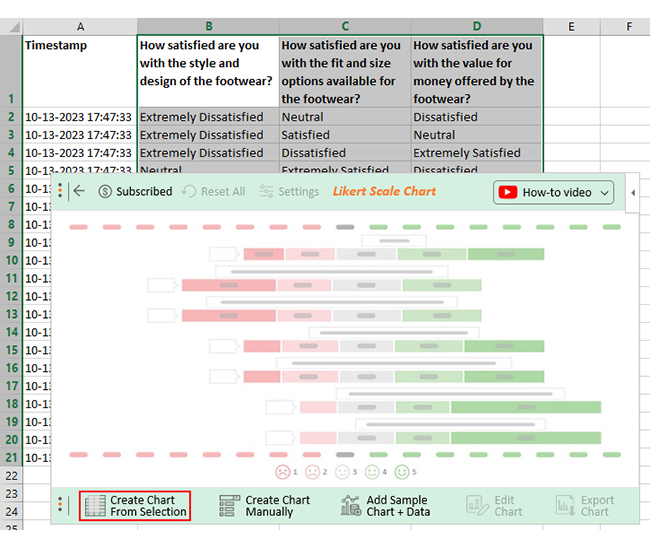

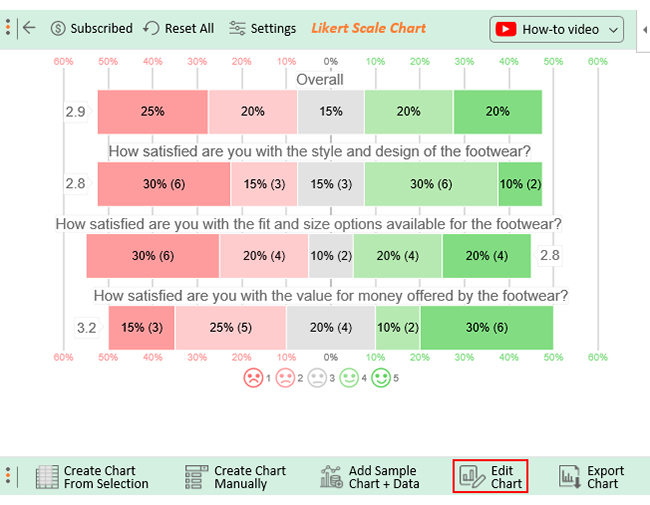


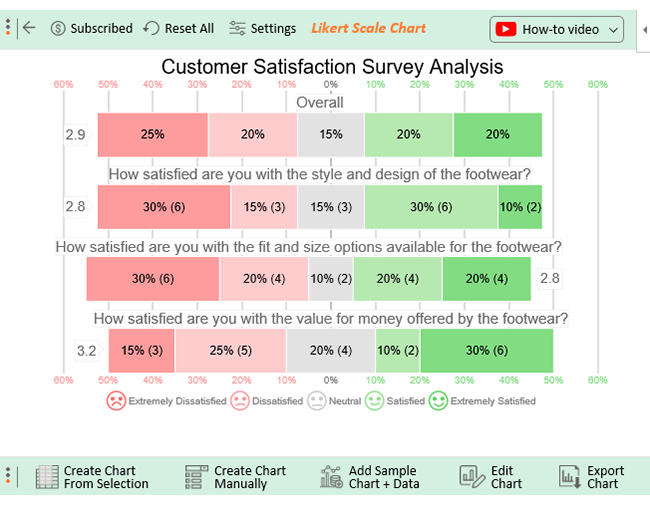



Let’s say you manage a school. You want to gather feedback from students on various issues like the quality of teaching. You have created a survey with the closed-ended questionnaire below;
Students respond to each question using the response scale below.
Assume your survey yields the data table below.
| Timestamp | How satisfied are you with the quality of teaching? | How satisfied are you with the academic resources? | How satisfied are you with the administrative services? | How satisfied are you with the availability of extracurricular activities? |
| 10-13-2023 17:47:33 | Neutral | Dissatisfied | Dissatisfied | Delighted |
| 10-13-2023 17:47:33 | Delighted | Delighted | Frustrated | Neutral |
| 10-13-2023 17:47:33 | Satisfied | Dissatisfied | Delighted | Dissatisfied |
| 10-13-2023 17:47:33 | Delighted | Delighted | Delighted | Satisfied |
| 10-13-2023 17:47:33 | Neutral | Satisfied | Neutral | Satisfied |
| 10-13-2023 17:47:33 | Satisfied | Neutral | Delighted | Delighted |
| 10-13-2023 17:47:33 | Delighted | Frustrated | Delighted | Frustrated |
| 10-13-2023 17:47:33 | Dissatisfied | Delighted | Delighted | Satisfied |
| 10-13-2023 17:47:33 | Frustrated | Neutral | Satisfied | Delighted |
| 10-13-2023 17:47:33 | Satisfied | Satisfied | Satisfied | Delighted |
| 10-13-2023 17:47:33 | Delighted | Satisfied | Frustrated | Satisfied |
| 10-13-2023 17:47:34 | Satisfied | Frustrated | Dissatisfied | Frustrated |
| 10-13-2023 17:47:35 | Satisfied | Satisfied | Neutral | Delighted |
| 10-13-2023 17:47:36 | Delighted | Dissatisfied | Dissatisfied | Delighted |
| 10-13-2023 17:47:37 | Dissatisfied | Frustrated | Delighted | Delighted |
| 10-13-2023 17:47:38 | Delighted | Dissatisfied | Satisfied | Frustrated |
| 10-13-2023 17:47:39 | Delighted | Neutral | Frustrated | Satisfied |
| 10-13-2023 17:47:40 | Neutral | Dissatisfied | Frustrated | Delighted |
| 10-13-2023 17:47:41 | Dissatisfied | Delighted | Dissatisfied | Satisfied |
| 10-13-2023 17:47:42 | Satisfied | Neutral | Dissatisfied | Dissatisfied |
This table contains example data. Expect many responses and questions in real life.




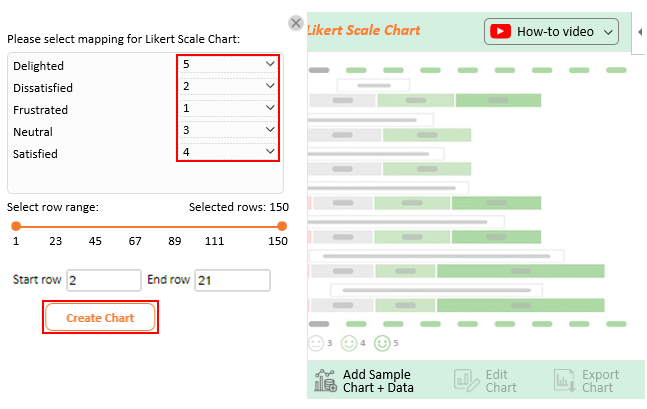







Here are some tips for effectively using closed-ended questions:
Ensure that your closed-ended questions are straightforward to understand, avoiding ambiguity or confusion.
Keep the language of your questions simple and accessible to all respondents, regardless of their background or education level.
Provide a reasonable number of response options to prevent overwhelming responses and encourage accurate responses.
Ensure that the response options provided cover the full range of possible answers without bias or leading the respondent to a specific answer.
If relevant, consider shuffling the order of response options to mitigate the possibility of response bias influenced by the presentation order.
Each question should address only one specific aspect to avoid confusion and ensure clarity in responses.
Before administering your survey, pilot test your closed-ended questions with a small sample group to identify any potential issues or areas for improvement.
Move beyond simple agree/disagree. Likert scales empower respondents. They can choose from a range of options, reflecting their exact level of agreement or disagreement with a statement.
Ensure uniformity in the response format, whether it be checkboxes or radio buttons, to enhance respondent navigation ease.
Craft your survey with a mix of question formats! Include closed-ended options for selection and open-ended prompts for elaboration. This approach facilitates a comprehensive analysis by gathering both statistical data and in-depth insights. This approach gathers both numerical data and in-depth responses, providing a clearer picture.
Here are some advantages of using closed-ended questions:
Closed-ended questions facilitate swift responses, rendering them effective tools for collecting data from a broad spectrum of respondents.
Closed-ended questions generate responses that maintain organization and consistency, thereby facilitating analysis and comparison.
Closed-ended responses can be easily quantified and analyzed using statistical methods, allowing for straightforward interpretation.
Closed-ended questions reduce the likelihood of interviewer bias or influence since respondents choose from pre-established options.
Respondents may feel more comfortable answering closed-ended questions since they are not required to generate their responses.
Closed-ended questions prove advantageous in collecting data on sensitive subjects, offering respondents the choice to offer discreet responses.
By structuring surveys and questionnaires, closed-ended questions ensure that the data collection process remains clear and coherent.
The provision of specific response options in closed-ended questions helps enhance data accuracy by minimizing the possibility of ambiguous or misunderstood responses.
Closed-ended questions generally necessitate respondents to choose a response, which decreases occurrences of missing data in contrast to open-ended queries.
The straightforwardness and conciseness of closed-ended questions can boost response rates as they impose lesser cognitive load on participants.
Here are some disadvantages of using closed-ended questions:
The finite options presented in closed-ended questions can limit respondents’ ability to convey nuanced or complex perspectives.
Closed-ended questions may yield responses that lack the depth and detail required, thus restricting the richness of the collected data.
The predefined response options in closed-ended questions may reflect the biases or assumptions of the questionnaire designer, leading to biased results.
Closed-ended questions may not capture unexpected or unanticipated responses, potentially overlooking valuable insights.
Closed-ended questions are a type of survey or interview questions that offer predefined answer options. Respondents choose from specific responses, such as “yes” or “no,” multiple-choice options, or rating scales.
Closed-ended questionnaires are surveys or data collection instruments primarily composed of closed-ended questions. These questionnaires use specific answer choices, restricting respondents to select from the provided options. As a result, this allows for straightforward data analysis and quantification.
“How likely are you to recommend our product on a scale of 1 to 10?” This closed-ended question quantitatively measures customer satisfaction and the likelihood of a recommendation.
Closed-ended questions offer standardized data collection, quick analysis, and ease of response. They provide specific answer options, facilitating quantitative data gathering. As a result, they make comparisons between respondents or groups more straightforward.
Closed-ended questions serve as powerful allies in the realm of efficient surveys. They streamline data collection by offering predetermined response options, ensuring standardized and concise answers.
The closed-ended questionnaire examples above showcase their versatility across various domains. From measuring customer satisfaction and conducting market research to gathering valuable employee feedback. Moreover, the structured nature of closed-ended questions allows for easy categorization and quantification of responses. This makes it easier to analyze the data and draw meaningful conclusions.
With a closed-ended questionnaire, you can obtain quantifiable data that simplifies analysis and enables easy comparison between different groups. This approach boosts response rates due to simplicity and expedites the overall research process.
When complemented with ChartExpo, the power of closed-ended questionnaires reaches new heights. ChartExpo’s user-friendly interface empowers you to transform survey data into visually stunning and insightful charts effortlessly. This breathes life into closed-ended survey responses, making data interpretation a breeze.
Go forth, armed with these examples and ChartExpo, and unlock your surveys’ full potential of closed-ended questions.
How much did you enjoy this article?